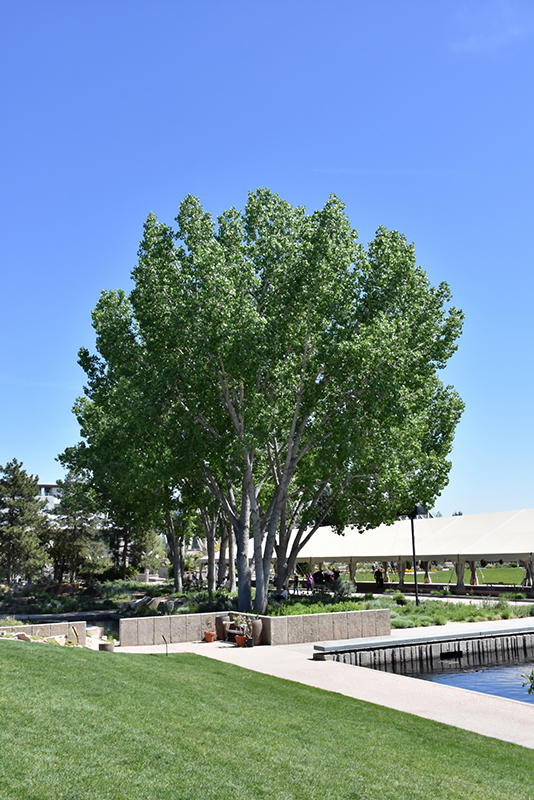Western Cottonwood Populus deltoides var. occidentalis Height: 60 feet Spread: 50 feet
Sunlight:
Hardiness Zone: 2a Description: A large and wide spreading shade or windbreak tree; extremely fast growing and adaptable to exposed, dry conditions and poor soils; roots can be aggressive so don't plant near a house, only for larger properties and parks; female trees disperse seeds Ornamental Features Western Cottonwood has rich green deciduous foliage on a tree with a round habit of growth. The large serrated heart-shaped leaves turn yellow in fall. However, the fruit can be messy in the landscape and may require occasional clean-up. Landscape Attributes Western Cottonwood is a deciduous tree with a more or less rounded form. Its relatively coarse texture can be used to stand it apart from other landscape plants with finer foliage. This is a high maintenance tree that will require regular care and upkeep, and is best pruned in late winter once the threat of extreme cold has passed. Gardeners should be aware of the following characteristic(s) that may warrant special consideration; Western Cottonwood is recommended for the following landscape applications; Planting & Growing Western Cottonwood will grow to be about 60 feet tall at maturity, with a spread of 50 feet. It has a high canopy of foliage that sits well above the ground, and should not be planted underneath power lines. As it matures, the lower branches of this tree can be strategically removed to create a high enough canopy to support unobstructed human traffic underneath. It grows at a fast rate, and under ideal conditions can be expected to live for 70 years or more. This tree should only be grown in full sunlight. It is an amazingly adaptable plant, tolerating both dry conditions and even some standing water. It is considered to be drought-tolerant, and thus makes an ideal choice for xeriscaping or the moisture-conserving landscape. This plant does not require much in the way of fertilizing once established. It is not particular as to soil type or pH, and is able to handle environmental salt. It is highly tolerant of urban pollution and will even thrive in inner city environments. This species is native to parts of North America.![]()
![]()
![]()
![]()
![]()
![]()
![]()
![]()
top of page
Louie's Nursery Menifee - Plant Finder
Characteristics
Applications
Features & Attributes
This tool is an online resource representing many of the varieties that we carry over the course of the season, and is intended for informational purposes only. Inventory varies seasonally, so we cannot guarantee that every plant will be in stock at all times - please contact the store directly for current availability. It does not include our entire selection of plants, so be sure to visit our store to see varieties that may not be represented on this list.
bottom of page
